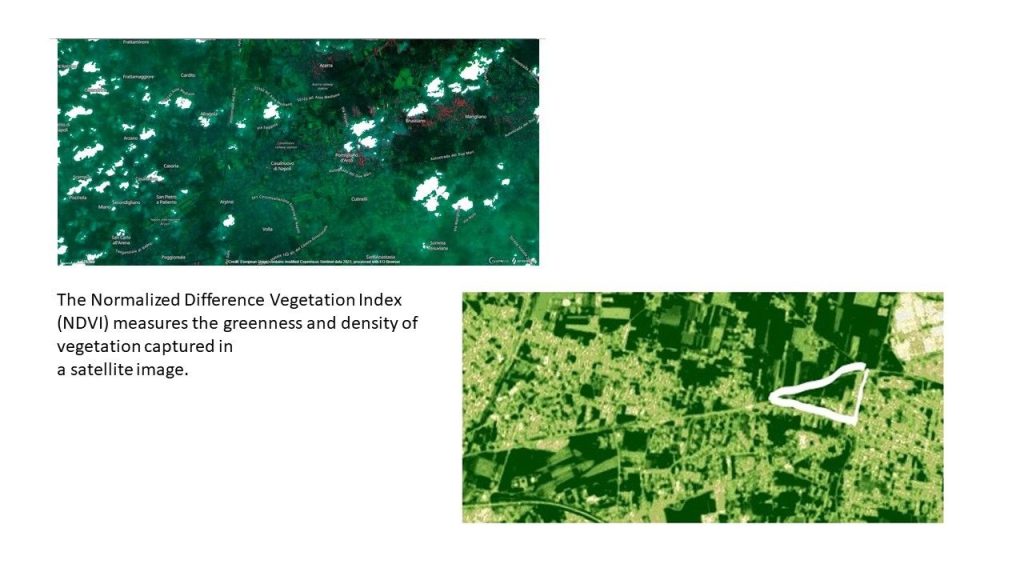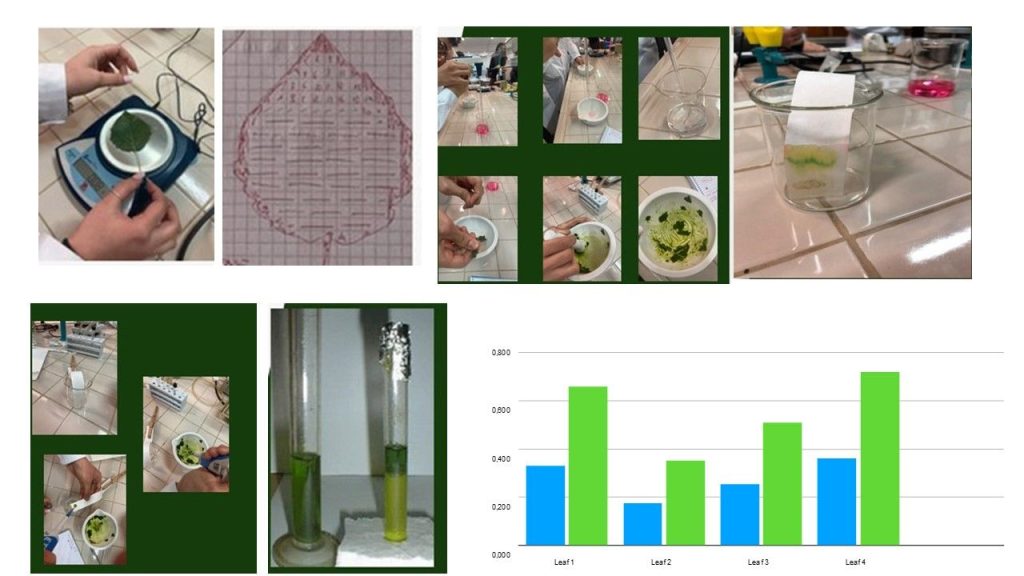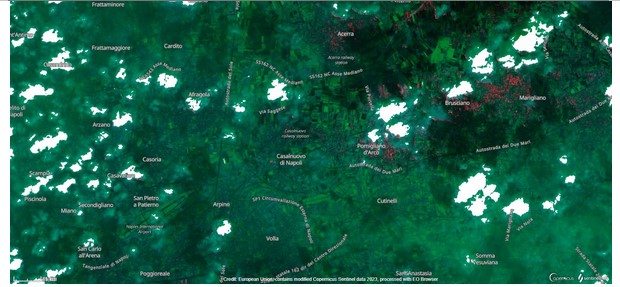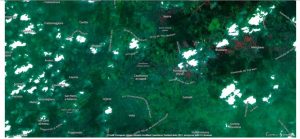Climate Detectives Projects 2022-2023
Project title: The colour of climatic change
Team: The climate colour
Liceo Scientifico e delle Scienze Umane S. Cantone Pomigliano d’Arco Italy 24 Student’s age: 18-19 years old
Can climate change be studied with the observation of the flora’s colour of one’s own territory?

Liceo Salvatore Cantone is a school located in Pomigliano D’Arco, a small town near Naples, in “Piana Campana” 392km2 of extension. Students are concerned about flora variations (colour and species) related to climate changes in our territory. The students worked on: the change of the typical culture of Pomigliano D’Arco and on colourful leaves in autumn during “green down”. Collecting data on the original Pomigliano’cultures until 1940 includes the plain areas that surround the Phlegrean and Vesuvian volcanic districts, with the Piana Acerrana, the Agro Nolano and the portion of the Sarno plain in the province of Naples. Specifically, system 13 embraces a diverse range of rural landscapes, with the municipalities (57%) of those of the highlands of the foothills: the Vesuvian one, the foot of Monte Somma, and that of the limestone reliefs. These areas are characterized by the presence of dark, deep, well-drained, permeable, easily workable volcanic soils, soil was richer in water and dumper. The student reflects on the fact of about 32% of its extension belongs to the areas of the alluvial plains, in particular, they are the alluvial plains of the Sebeto, the Regi Lagni and the Sarno River. Limestone soils are medium to moderately fine in texture, with moderate drainage of the water table which can also become very superficial during the wet season. (Figure 1) In the yellow area are evidentiated the green area in which the students performed our analysis. The aim of this project is to investigate and comparate through direct analysis collect with outdoor experience and satellite data observation by Eo-Browser from Esa to understand the state of health of our territory and its role in the flora, colour and species of vegetation and in its impact on climate grows warmer and climatic change.

Students data analysis shows orchards’ cultivation increased (29,7%) due to the climate and soil transformations. This cultivation needs dryer soil, due to occasional and plentiful rains, which aren’t well absorbed by the soil below. Students use an Eo-browser and Sentinel-Hub application to analyze, determine and compare vegetation, soil, water content, and spongy mesophyll structure in vegetation, monitoring droughts and the typical colour change of tree leaves (green to yellow-orange). In particular, students’ analysis focuses on the value of vegetation and soil water areas data from September to December of 2010 and 2022 (Figure 2). The data collection will take place by consulting the data deposited on the censuses of the green and cultivated areas of our region. The direct analysis shows in outdor experience the age, type and height of trees present in our cultivated area “rural 13 areas” . Furthermore, a characterization of the chlorophyll content and other pigments contained in the leaves samples will be performed by chromatographic analysis. Finally, everything will be compared with the Sentel -hub collecting data to build a timeline of the beginning of the change in colour and in the type of trees present in our area. The Leaf Area Index of a forest (LAI: m2 of leaf area on m2 of soil) is also analysis performed as a descriptor of the structure, and composition, of ecosystems. LAI, directly correlated absorption of CO2 and transpiration by the vegetation, governs the exchange of energy and matter between the lithosphere, the atmosphere and organisms, affecting the fluxes of carbon, oxygen and water, the students show a reduced green-down process, the foliage is postponed 10-14 days later than usual. Showing a long summer, the persistence of chlorophyll, rain and storms that make the leaves fall and its percentage of carbon before and after the “foliage” see the figure uploaded in the third section.)

This work revealed several important pieces of information about the state of green areas of own small city. The possibility of monitoring naturally the state of climatic changes in our areas through direct and satellite observation of Eo- browser. In fact the timing of when leaves change from green to a colourful mélange depends on two factors: temperature and light. Cold temperatures tell the tree that it’s time to shut down for the winter. It stops making chlorophyll, the stuff that makes leaves green, and as a result, other underlying pigments like red, yellow, and orange finally get a chance to shine. The need to deal synergistically with climate and biodiversity by researching and implementing actions to strengthen the resilience of ecosystems, restore degraded ones, and protect and promote nature-based solutions. My students worked on a project of the constitution of the “Natural Climatic Station” which through monitoring of the green down and green directly and with satellite data of Eo by ESA helped the Municipality to analysis of the state of climatic change, and state of health of our green are. These initiatives contribute to helping forest conservation, essential to ensure the survival of plants, animals vertebrates and invertebrates, fungi and other microorganisms, and for the maintenance of services key ecosystems including biomass production, carbon storage,6 Urban and extra-urban forestation plan regulation of the water cycle and of the various bio-geochemical components, soil protection, as well as cultural services. Furthrtmor e the possibility of Peak prediction fall foliage may help to prevent the impact on the cultivation and on the ecosystem (Figure 5) (Figure 6)
Projects are created by the teams and they take the full responsibility of the shared data.
← All projects







